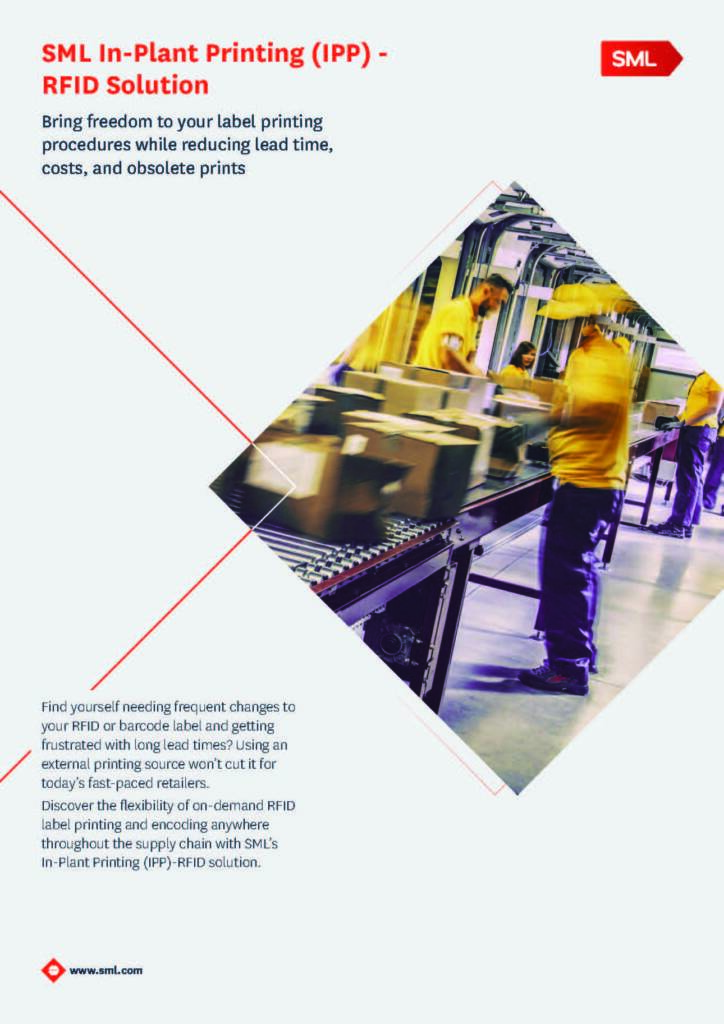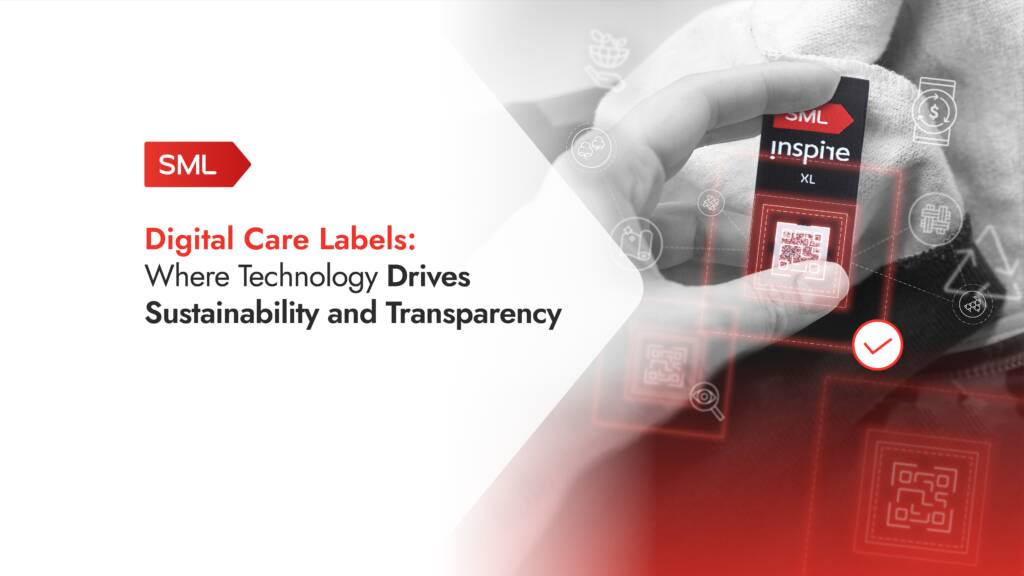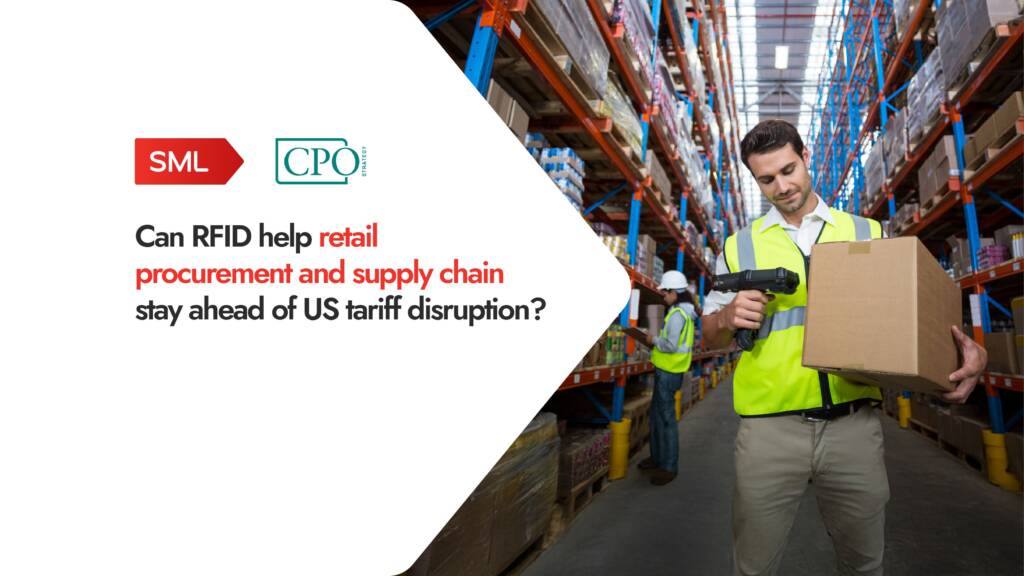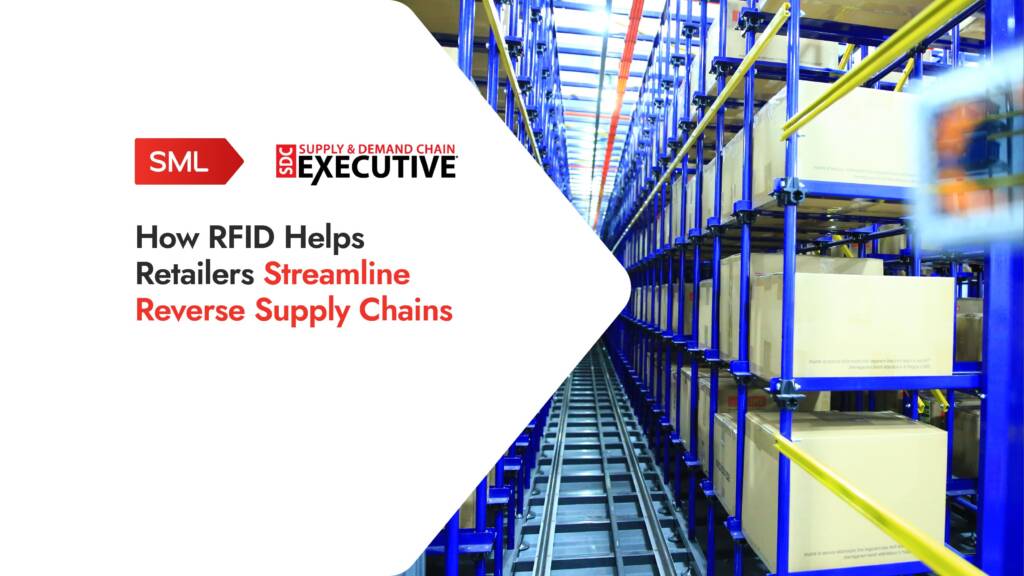Unlocking Next-Level Supply Chain Visibility with Item-Level RFID: Insights, Benchmarks, and Best Practices for 2026
If 2025 proved anything, it’s this: supply chain visibility is no longer a feature, it’s the foundation. The brands that win tomorrow are the ones that can see, decide, and act in real time.
Visibility has become the operating system of competitive retail; it drives inventory accuracy, fulfillment speed, sustainability commitments, and differentiated customer experience. And as retailers enter 2026, one message from our latest LinkedIn poll stands out clearly: visibility that drives action will define success.
This is the year item-level RFID moves from counting to commanding the flow of goods. Below we share what’s working – benchmarks, use cases, and best practices to help you turn visibility into measurable business performance of retail RFID technology, RFID tags, and RFID software.
As a global leader in digital identification, SML connects billions of items each year with item-level RFID tags and encoded RFID labels, turning every tag into a trusted data source. When tags are designed, encoded, and managed at the factory and persist through distribution and store operations, they form the backbone of real-time, reliable supply chain intelligence. With 40 years in retail and 25+ production facilities across 20+ countries, SML delivers end-to-end visibility from factory floor to shelf and beyond with Inspire RFID tags, brand identification solutions, and printing and encoding solutions.
The Industry Voice: What leaders are saying
“RFID stopped being a counting tool. It’s how we orchestrate the flow: what to make, where to move, and how to promise.”— COO, Global Retailer
Across the retail industry, one truth dominates conversations: accuracy is assumed, action is the differentiator. Most leaders we speak with consider 95%+ accuracy a baseline for omnichannel execution. The new challenge is how to leverage that visibility to deliver superior outcomes:
- Same-day availability, accurate BOPIS/ship-from-store
- Fewer cancellations and lost sales
- Real-time item tracking is scaling fast: dock doors, conveyors, and backroom portals cut hunt time and extra handling
- Sustainability wins are measurable. demand sensing and production rightsizing reduce overproduction, waste, and reverse logistics
How item‑level RFID makes visibility real
Supply chain visibility is the continuous, end-to-end understanding of inventory identity, location, and status, from source to sale and circular flows. Item-level RFID uniquely enables this through:
- Automated capture at scale: passive UHF RFID tags and RFID labels read at high speed without line of sight, eliminating manual scans and errors.
- Persistent identity: a unique digital ID from factory encoding through distribution and post‑sale use.
- Continuous streams of data: fixed and handheld readers stream arrive, depart, locate, and verify events to the cloud for near real‑time status.
- Integrated intelligence Integrated intelligence with RFID software: cloud platforms fuse RFID with WMS/ERP/OMS1, computer vision, and environmental sensors to predict ETAs, trigger replenishment, flag exceptions, and hold at‑risk items.
[1] WMS: Warehouse Management System; ERP: Enterprise Resource Planning; OMS: Order Management System
SML starts at the source with Inspire RFID tags and global printing/encoding services to ensure tag performance and data integrity at scale. Factory Care Solutions and platform integrations extend visibility through every node, supported by item-level RFID software and retail RFID technology.
Momentum, impact, and where it’s working
Market momentum
- RFID is scaling: USD 17.12B in 2025 to USD 37.71B by 2032 (11.9%+ CAGR).
- Retail leads and is expected to reach USD 29.04B by 2033, driven by accuracy, loss prevention, and omnichannel retail RFID technology.
- Only ~6% of companies report end-to-end visibility today, yet visibility spend is set to hit USD 21.8B by 2026. Pilots are becoming programs across retail, healthcare, and food.
Impact on core KPIs
- Inventory accuracy: item-level RFID routinely elevates accuracy into the 95 – 98% range, enabling dependable availability and precise replenishment.
- Order fulfillment speed: RFID-enabled receiving and automated pick verification deliver double‑digit distribution center(DC) cycle time gains and materially faster counts and replenishment in stores.
- Shrink and loss prevention: item-level tracking reduces unknown shrink and improves exception handling; retailers see more than 10% of stockout and cancellation reductions.
- Labor productivity: automated counting and checks reclaim hours from manual inventories and order verification.
Where it works across the chain
Factory: Make, encode, assure with Apparel RFID Tags and RFID Labels
By tagging and encoding items at the factory and checking each batch with robust quality controls, brands consistently achieve first‑time read rates above 99.5%, which cuts downstream issues. For example, a global apparel manufacturer applies apparel RFID tags at sewing/finishing and uses automated verification gates at pack‑out to prevent mismatches against Advance Ship Notices (ASNs). The result is fewer chargebacks and smoother cross‑border moves. This early, item‑level visibility also improves demand sensing, helping right‑size production based on real sell‑through and size‑curve patterns, which reduces overproduction and waste.
Distribution center: Retail RFID Technology to receive, locate, ship
In the distribution center, RFID makes receiving, locating, and shipping faster and more accurate. Fixed readers at inbound and outbound doors, plus zone readers in staging areas, continuously “see” inventory and cut search time by 30 – 50%, reducing idle time. Pallet- and carton-level read tunnels automatically check shipments against ASNs and customer order lines in seconds, boosting shipment accuracy and reducing rework. And if a recall hits, linking lot or serial numbers to item IDs allows targeted pulls within minutes – vital for regulated products and brand protection.
Beyond factory and DC: orchestrate, don’t just observe
Item-level RFID strengthens upstream-to-downstream coordination without relying on store software. High-accuracy item data improves promise reliability and reduces cancellations by giving operations teams clearer signals on what to make, where to position inventory, and when to release stock. Loss prevention benefits extend across handoff points: exit and choke‑point reads create traceability that deters organized theft and supports investigations when needed. Digital IDs also enable reverse‑flow efficiency and circular programs by authenticating items and supporting condition grading for resale or refurbishment. From a sustainability standpoint, tying item‑level sell‑through back to forecasting helps right‑size purchase orders and cut markdowns, while eco‑forward label materials and precise factory encoding make these waste‑reduction gains measurable and repeatable. Where barcodes remain, QR code labels can complement digital identification for consumer engagement and DPP initiatives.
What to do now
1. Start at the source: the tag is the truth
Specify high-performance inlays and form factors matched to use case (e.g., apparel vs. hard goods) and enforce encoding standards at the factory. SML’s Inspire RFID tags and global service bureau ensure consistent quality and data integrity at scale, supporting brand identification solutions and printing and encoding solutions
2. Design an integrated data backbone
Treat RFID as core telemetry, unify RFID events with WMS, ERP, and OMS via a cloud platform and standardized schemas. Ensure bidirectional flows – events inform orders; orders configure verification.
3. Instrument critical moments of truth
Prioritize factory pack‑out, DC inbound/outbound, and customer promise points (including BOPIS/ship‑from‑store). Use fixed portals at high‑volume lanes and handheld sweeps for targeted checks to balance coverage and cost. RFID handheld encoding can accelerate store‑level execution and audits.
4. Turn signals into actions
Apply clear business rules to flag what matters: misroutes, aging inventory, and location drift, then layer machine learning to forecast demand by size, style, and location. Turn those insights into concrete actions such as targeted transfers between nodes, priority replenishment for fast movers, and exception workflows for items that are off-plan.
5. Govern for scale and value
Align Supply Chain, IT, and Operations on shared KPIs (availability, cancellation rate, cycle time, shrink), and standardize tag data models, reader configurations, and compliance. Measure financial impact, not just read rates.
What’s next: 2026 and beyond
- Automation everywhere: more fixed infrastructure at factory lines, packing stations, and DC tunnels to compress cycle times and remove manual scans.
- Smarter tags and sensors: RFID will increasingly pair with environmental sensing (temperature, humidity, shock) to protect quality in cold chains and other sensitive categories during production and distribution.
- AI-native orchestration: predictive allocation and automated exception resolution become standard as RFID streams feed learning systems.
- Sustainability by design: Digital Product Passports (DPPs), authenticated resale, and production right‑sizing move from pilots to policy; item‑level traceability underpins credible ESG reporting. QR code labels can complement digital identification for consumer transparency.
The shift underway
Strategically, the shift is from “Where is my inventory?” to “What should I do right now to keep promises, protect margin, and reduce waste?” RFID-enabled visibility is the prerequisite to proactive resilience and superior customer experience.
End-to-end visibility is now the critical path to operational excellence. Item-level RFID starting with a high-quality tag at the factory – creates the continuous, accurate data stream required to sense demand, verify flows, and act in real time. The benchmarks are clear: higher accuracy, faster fulfillment, lower shrink, and measurable sustainability gains. The winners in 2026 will turn visibility into orchestration: integrating platforms, aligning teams, and embedding analytics into daily decisions.
Ready to scale from pilots to performance? SML can help source, encode, and integrate item‑level RFID across your network, linking factory and distribution operations with a reliable digital ID for every item. Explore item-level RFID solutions or talk to our team about your factory/DC use case.




